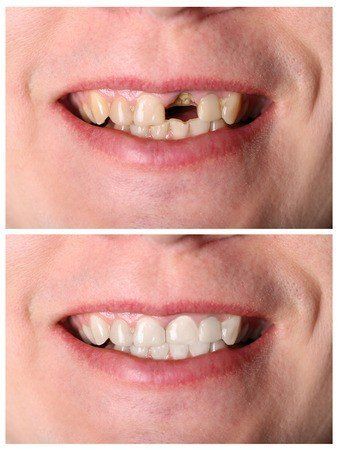Restorative Dentistry ‘Fits’ Individual Needs
As most patients know, regular dental treatment should take
place roughly twice a year, six months apart. However, it can occasionally be
recommended beyond routine cleanings, sometimes for a form of restorative
dentistry, which involves diagnosing, preventing, and treating oral diseases.
Dentists can suggest treatment plans for restoring teeth that have decayed,
cracked, chipped, become discolored, or are even missing. When patients have
teeth affected by one of these trauma-related or developmental defects, they
can benefit from restorative care, such as fillings, crowns, veneers, or
bridges.
Dental Visit
Oral conditions can be diagnosed by dentists during routine visits, using mechanical, radiographic, and visual methods to analyze the teeth's surface. Some restorative treatments are only slightly invasive and may be performed during one appointment. Other more complex dental treatments could require several visits, with some procedures requiring specialists, such as endodontists, prosthodontists, or maxillofacial surgeons. If there have been any recent advancements in restorative dental care, dentists can discuss any options that may enhance the treatment’s effectiveness for patients. Different kinds of anesthesia or sedation may be required, allowing patients to be free of anxiety or discomfort during the procedure.
Restorative Materials
Dental professionals have the option of four different dental materials to use for restoring teeth: dental amalgam, porcelain, gold, and composite resin. Composite resin includes plastic or ceramic compounds, which can be used along with materials like glass ionomers. Other non-precious and precious metals like gold are also available and just as durable. An important thing to remember to do is talk with your dental professional about mercury in their materials, which, while harmless in many restorations, some dental practices would prefer not using.
Fillings
With any of the previously mentioned materials, there are various treatment options for restoring the teeth’s surface or replacing missing teeth. For example, fillings often involve amalgam for restoring the teeth's surface, generally being placed on posterior teeth. An amalgam filling is an alloy, meaning it does have mercury or possibly a substitute, while composite fillings are resins that are used for teeth color restorations on both back and front teeth. Most patients prefer composite fillings, as they are hard to see inside the mouth.
Veneers
Regarding veneers, there are layers of material (composite or porcelain) that are teeth-colored much in the same way as composite fillings. They’re cemented or bonded to one or more teeth’s surfaces, mainly lower and upper front teeth (or incisors). They can help improve the look of uneven, chipped, or cracked teeth.
Bridges and Crowns
Regarding crowns, it’s a restoration that covers entire parts of teeth that have been chipped, cracked, damaged, or been subjected to an extensive restoration which threatens the entire tooth. Crowns can be made from porcelain, gold, or similar ceramic materials. Bridges, on the other hand, are prosthetic replacements for one or more real teeth, consisting of crowns adjacent to the spaces with replacement teeth, which attach to the crowns.
Restorative procedures can be quite expensive, but you can save as much as 20 percent off your bill by signing up for our New Hampshire discount dental plan. For more information, please click here.
Copyright: roxiller
/ 123RF Stock Photo











